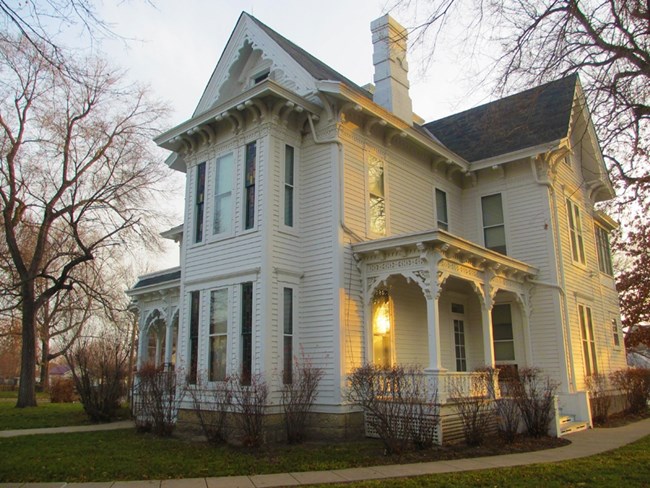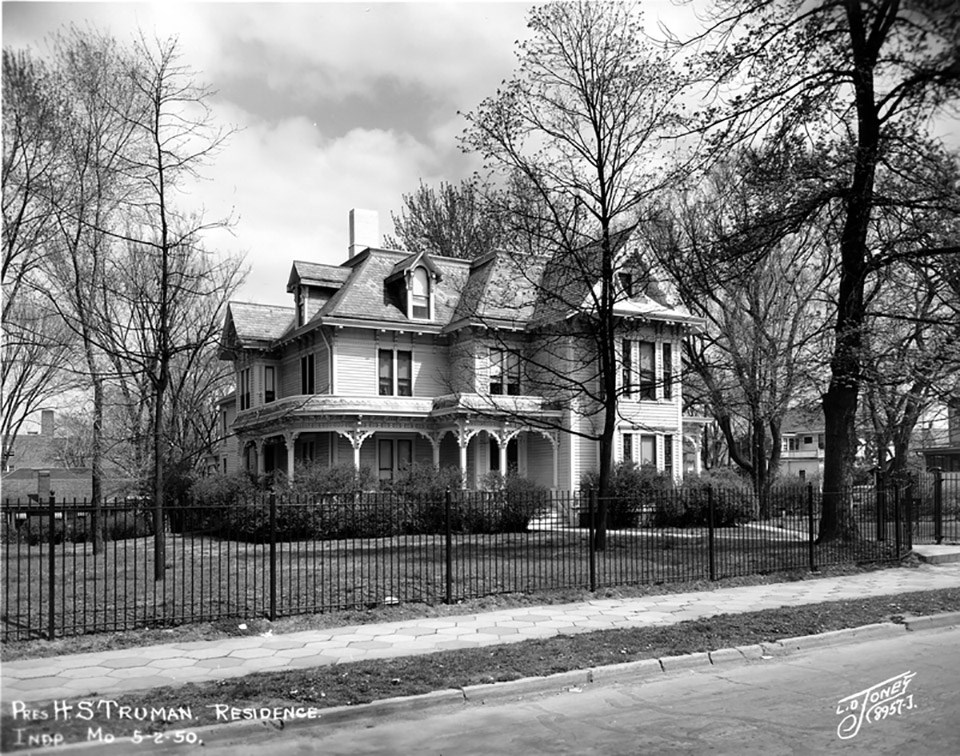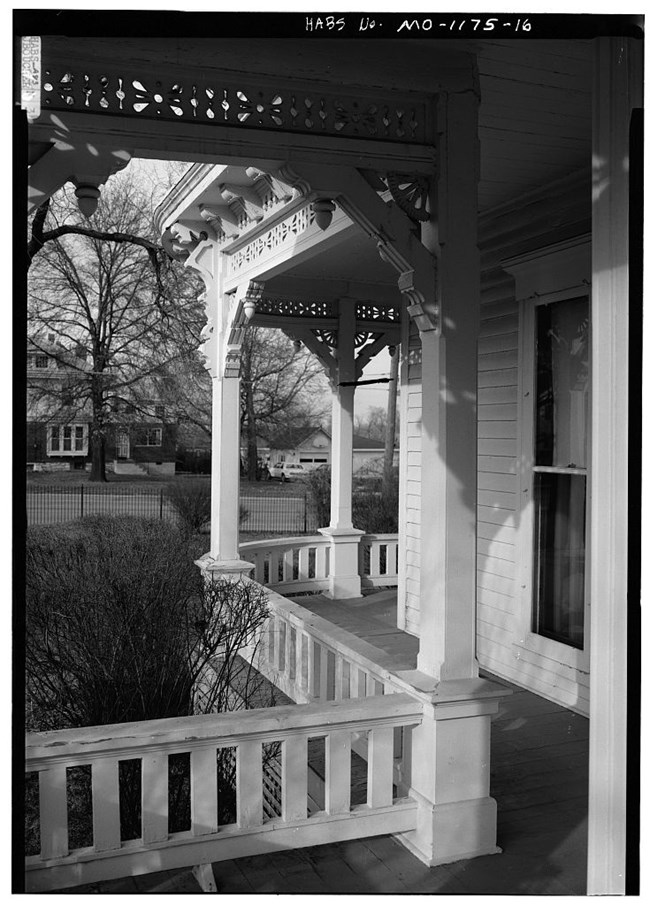Last updated: December 14, 2020
Article
Truman Home Cultural Landscape
Introduction
Harry S. Truman was considered an unlikely candidate for the presidency by many. Born in Lamar, Missouri in 1884, he held a variety of menial jobs before working as a farmer on his family farm. He was relatively uninvolved in politics until his later life when elected as Jackson County district judge in 1922. Truman went on to serve as a U.S. senator (1934-1945) before his nomination for the vice presidency.
NPS
The National Park Service preserves the longtime home of President Harry Truman and his wife, Bess Truman in Independence, Missouri. President Truman valued his community and privacy throughout his life and returned home after his presidency. The period of significance dates from 1919 to 1971 when Truman moved into the home to the designation of Harry S Truman National Historic Landmark on November 11, 1971. The Truman Home is listed on the National Register and also contained within a larger Independence Unit, part of a National Historic Landmark District.
Landscape Description
Located on 219 North Delaware Street in Independence, Missouri the Truman Home occupies approximately 1.4 acres. It retains its historic domestic appearance as a two- and one-half story, Queen Anne Victorian-style home with clapboard siding. An L-shaped porch wraps around the north and west side and is met by a straight concrete sidewalk, leading to the front door from the residential street.A Carriage house behind the home is one and one-half story and timber framed. During his residence, President Truman utilized the structure as a garage.

L.D. Jones (Harry S Truman Library & Museum)
The Independence unit includes the Truman home and nearby Noland, Frank and George Wallace homes. The Nolands were Harry Truman’s cousins and the Wallaces his brothers-in-law. The Independence unit is contained within the National Historic Landmark District which extends further into several blocks of downtown Independence.
Historic Use
Harry Truman, born to John and Martha on May 8, 1884, moved to Independence, Missouri in 1890. After graduating high school in 1901, Truman aspired to attend college, however, family financial problems hindered his goals. Instead, Truman held a variety of jobs, such as a bank and mailroom clerk, until returning home to work on the family farm. In 1905, Truman joined the National Guard while continuing to work. He also courted Elizabeth Virginia ("Bess") Wallace – a childhood classmate -- and stayed with the Nolands frequently during the courtship. He worked on the family farm for nearly a decade, continuing after his father passed away in 1914.
In 1917, Truman rejoined the National Guard and was deployed in the 129th Field Artillery to serve in France. During the war, Truman was promoted to Captain. Upon his return, he married Bess Wallace on June 28, 1919 and moved into the home at 219 North Delaware Street. Bess’ grandparents originally owned the home and the oldest portion predated the Civil War (circa 1850).
Truman owned a men’s clothing store from 1919 to 1922 that eventually went bankrupt before serving as a Jackson County Court judge. In 1934, Truman was elected to the Senate and the family lived between Independence, Missouri and Washington D.C. In 1944, President D. Roosevelt nominated Truman as Vice President. Truman assumed the presidency after Roosevelt’s unexpected death on April 12, 1945.
Truman owned a men’s clothing store from 1919 to 1922 that eventually went bankrupt before serving as a Jackson County Court judge. In 1934, Truman was elected to the Senate and the family lived between Independence, Missouri and Washington D.C. In 1944, President D. Roosevelt nominated Truman as Vice President. Truman assumed the presidency after Roosevelt’s unexpected death on April 12, 1945.

Jack E. Boucher / NPS, Historic American Buildings Survey (HABS MO-1175)
Truman won reelection in 1948. After completing his term in office, President Harry Truman and Bess returned to Independence in 1953. He continued to reside at 219 North Delaware Street house until his death on December 26, 1972. Bess maintained the home until her passing in 1982. The home was designated as a National Historic Site in 1983.
The quick acquisition of the home and numerous remaining artifacts informed the preservation effort to impart the high level of historic integrity, and ability to convey its association to President Harry Truman’s life. The Truman Home now provides visitors a unique opportunity to better understand the thirty-third President, a man who deeply valued his hometown and relationships. He lived in the home from his marriage to Bess in 1919 into his retirement.
Today, visitors can view the grounds and attend guided tours of the home’s interior. The nearby Noland Home provides additional educational opportunities.
Quick Facts
- Cultural Landscape Type: Historic Site
- National Register Significance Level: National
- National Register Significance Criteria: B
- Period of Significance: 1945-1953
Landscape Links
- Cultural Landscape Inventory park report
- Harry S Truman National Historic Site - Independence Unit Cultural Landscape Report
- National Register of Historic Place: Harry S Truman National Historic Site (Boundary Increase)
- Harry S Truman National Historic Site website
- Library of Congress: Harry S Truman House, Historic American Buildings Survey
- Harry S Truman Library & Museum
-
"Harry S Truman and Civil Rights," Truman Presidential Inquiries for the Classroom
- More about NPS Cultural Landscapes


